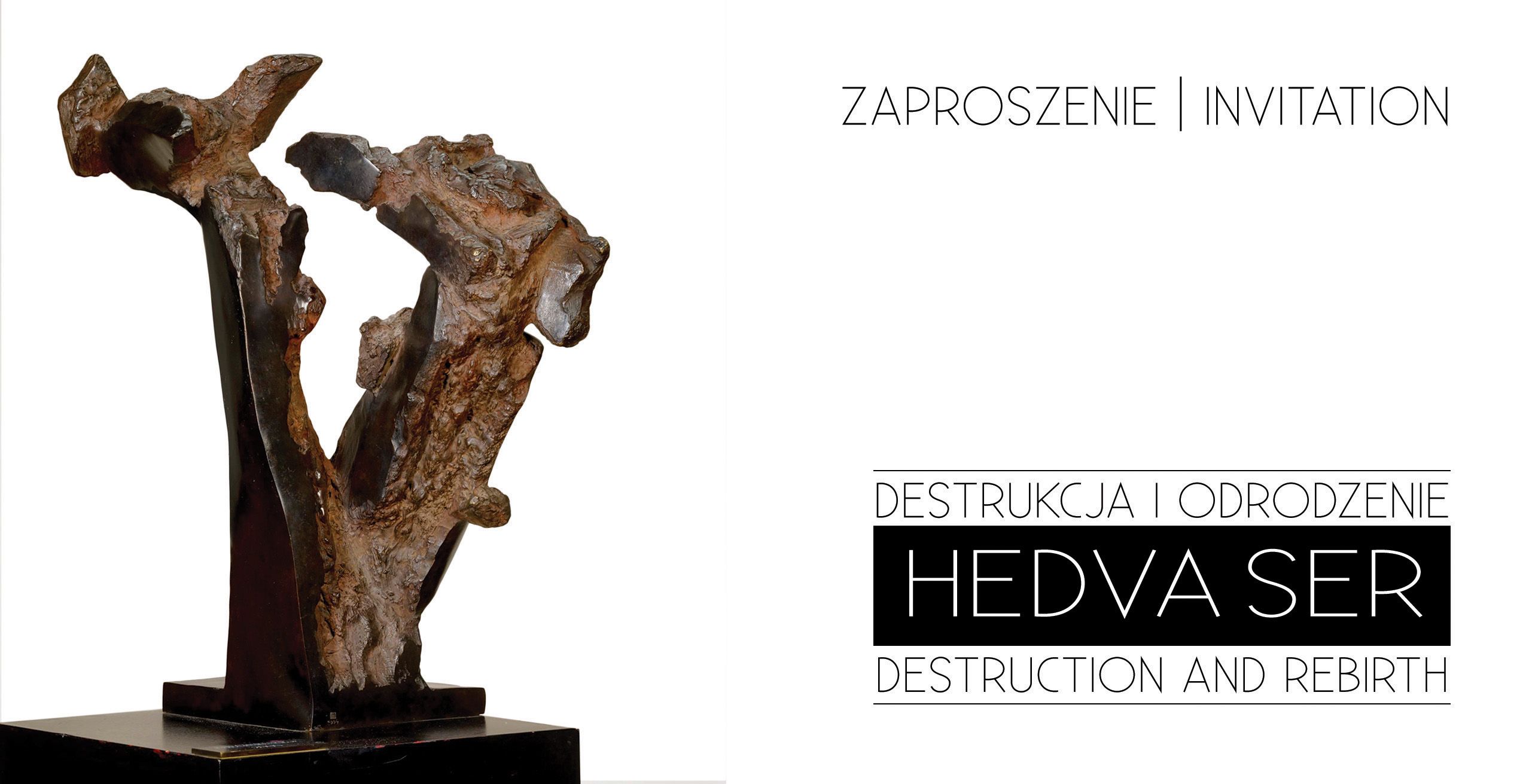NEE Invites You to the Hedva Ser Exhibition!
New Eastern Europe invites you to attend the opening of the fine art exhibit “Hedva Ser: Destruction and Rebirth” on Monday January 27th at 6:00 PM at the Galicia Jewish Museum in Krakow, Poland. Hedva Ser herself writes about the significance of her unique work:
“When I began working on these four sculptures last year, I did not realize how much they would reveal to me about many things connected to my life and the life of Poland’s Jewish community.
January 22, 2014 -
New Eastern Europe
-
Events

I am a child of the Diaspora. My parents died twenty years ago. My mother was raised in Warsaw, and my father in Lodz. After surviving the horrors of the concentration camps, they made a new life in Israel, where I was born.
None of us, the children of survivors, knew how lucky we were to be raised in Israel. For those who went through the terrible years in Europe, life was difficult as both Jewish and Gentile communities were seeking to turn the page on what their parents’ generation had endured or delivered in pain and suffering. Our Jewish heritage was often too heavy for them, and many chose in varying degrees to abandon it.
In Israel, we were surrounded by people like us. In Israel, people who lived through the Holocaust were a part of everyday life. Yet, many of us didn’t realize how deeply the fears and nightmares of our parents marked us, and how all of us would forever be touched by the human tragedy that was the Holocaust.
Some of us tried to escape it, not yet understanding that it was impossible to do so. I moved to France and studied there. I adopted art as my language and life and tried to bury the past. I thought that my roots to Poland had died with my parents. Then, four years ago on my first trip to Warsaw, I suddenly found myself crying as I walked through the airport, as though something had touched me from the past. In some way, I was acknowledging a deep connection that I had never known. I found a real sense of belonging here: in this land that for centuries was the home of one of Europe’s largest and most vibrant Jewish communities. When I found the Jewish cemetery where generations of my family were buried, I finally understood that this place is the land of my fathers. Yet, almost no one remained to tell the story of these people. I came to realize that this was my responsibility.
So I set out to tell the story of the generations lost and their ties to this land, using the language of art and sculpture. Two years ago, as a UNESCO Artist for Peace, I had the honor of participating in a special visit to Auschwitz led by the Director-General of UNESCO, Madame Irina Bokova. It was my first time to the site—a place that I had, in all honesty, been avoiding all my life.
Surrounded by good friends, I was able to make it through that very difficult day, though, at the same time, the powerful emotions that rose up in me called on me to create a work that would be a lasting voice, both as a witness to the pain and as a beacon for future hope.
The result is this set of four sculptures based on themes derived from Kabbalah, representing the destruction and reconstruction of Poland’s Jewish community. The first sculpture is entitled “Tearing”. The second is entitled “Explosion”. The third is “Interstice: Rapture with Hope”, and the fourth is “Totem: Renaissance and Reunification”. During this year of commemoration, observing the 70th the liquidation of the Vilnius Ghetto, I wanted to mark these events with symbols that bridge the past and the future and mark the distance between despair and hope. The work I do at UNESCO is about building peace through art. My goal is to teach children using the artist’s language of drawing and sculpture. When we teach about the Holocaust, words simply do not have the power to relay the feelings and emotions that are required to understand this dark moment of our history. I believe that sculpture, through its physical form, its tangible mass in space and time, has the necessary strength to transmit the history of Poland’s Jews to a new generation. Touching these heavy bronze sculptures permits us to feel the weight of history and the shape of tomorrow. Through these whispering bronzes, the voices of my mother, my father, and lost generations of Poland’s Jewish community will speak of their dreams and peace for the future, rendering them an enduring symbol of hope for the Polish nation.”
Hedva SER
January 2014

































